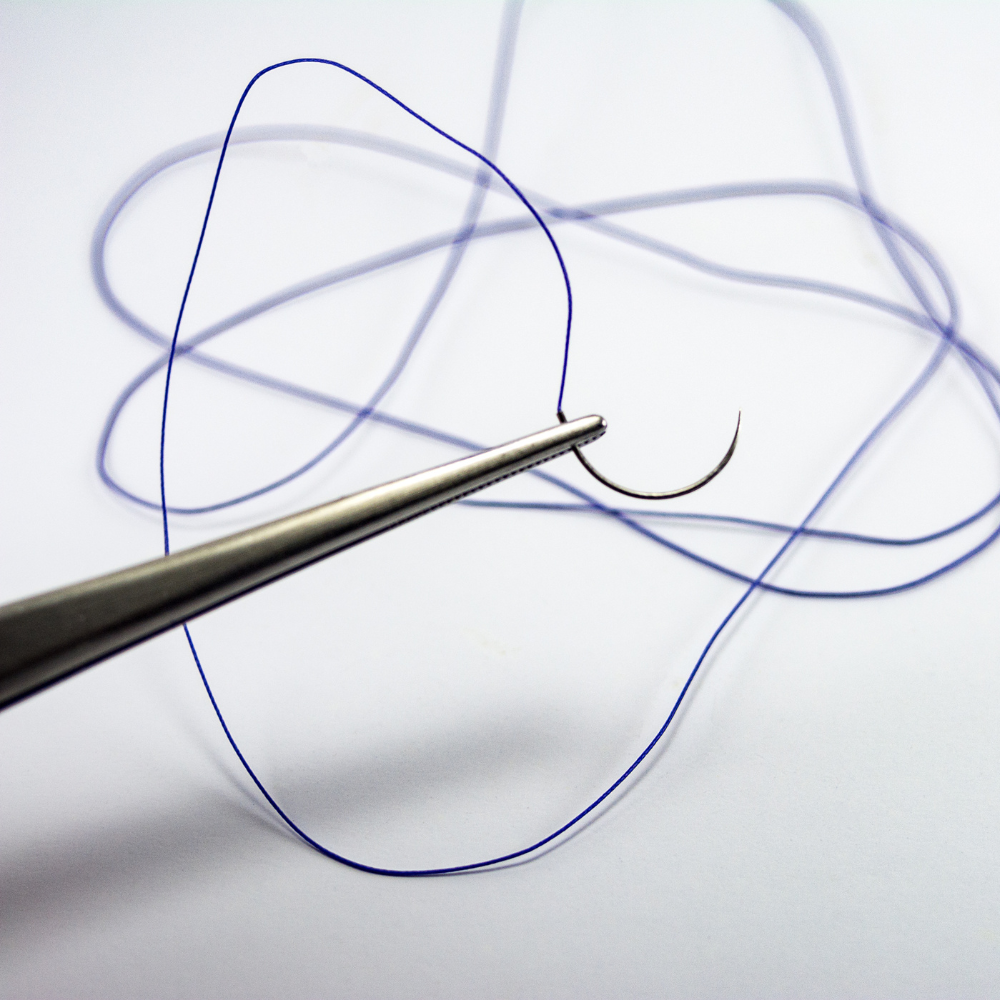Resorbable suture material: All information at a glance
Most wound closures after injuries or operations are still sewn today. The suture holds the wound edges together permanently, allowing for quick and clean healing. With traditional suture material, the threads are removed later, leaving a more or less noticeable scar. But what happens on parts of the body where the wound thread cannot be easily removed? Absorbable suture material offers the solution: it dissolves completely in the body . The following overview explains when absorbable suture material can be used, what the differences are between different products, and what the advantages and disadvantages of absorbable suture material are.
Table of contents
What is absorbable suture material?
When is absorbable suture material used?
When does absorbable suture material dissolve?
Buy absorbable suture material
What is absorbable suture material?
People have been using sutures to close wounds for over 5,000 years. At that time, natural materials were primarily used for this purpose, which often remained in the body after the injury had healed or had to be carefully removed. The first absorbable sutures were not used until a few centuries later: bowstrings, which were often made from animal tendons or intestines. The advantage of this suture: it dissolved after just a few days. This meant that the time-consuming process of removing the sutures could be avoided and the risk of wound infections was significantly reduced.
Resorbable suture material is basically the same as self-dissolving suture material : the enzymes active in the human body cause the suture material to decompose until it is completely broken down . Unlike many centuries ago, resorbable suture material today is no longer normally made of animal or organic materials. Instead, synthetic suture material is generally used . This is not only more robust and tear-resistant, but can also withstand hygienic standards much better. In addition, synthetic resorbable suture material has a significantly lower potential to trigger allergies .
The advantages of absorbable suture material at a glance:
- dissolves itself
- does not need to be removed
- ideal for difficult-to-access wound closures
- ideal for anxious patients and in veterinary medicine

When is absorbable suture material used?
Since absorbable suture material has the great advantage that the threads gradually dissolve on their own and therefore do not need to be removed, the products are used wherever wound closures are difficult to access after surgery. Wounds on internal organs and on the fatty tissue of the subcutaneous tissue , on the eyes and in the dental surgery area are therefore (almost) always sutured with absorbable suture material. Even for patients who are at high risk of not showing up for the appointment for the stitch removal, absorbable suture material is often used from the outset. This is why absorbable sutures are typically used in particular for suture material for dentistry and veterinary medicine .
When does absorbable suture material dissolve?
When it comes to the time it takes for absorbable suture material to dissolve, two parameters are of great importance:
- half-life
- dissolution time
Just like non-absorbable suture material, a self-dissolving thread must also be convincing in terms of tear resistance, elasticity, etc. However, the further the thread is absorbed , the less tear-resistant and stable the suture material is. This is why the half-life and dissolution time are always noted on all products from this area. The half-life indicates after what period of time the thread only has 50% of its original tear strength . The dissolution time, on the other hand, marks the point in time at which the thread has completely dissolved in the patient's body .
Simple example: Absorbable suture material that has a half-life of 5 to 7 days and a dissolution time of 30 to 40 days has only half of its original tensile strength after 5 to 7 days and has completely dissolved after 40 days at the latest. This is important for wound closures that have to withstand great stress. If an absorbable suture material is used here , it must be ensured that the wound is so resilient after the specified half-life that the suture does not tear despite the lower tensile strength of the thread.
Important to know: Both the half-life and the dissolution time of absorbable suture material can only ever be approximate, as many factors influence how quickly or slowly a thread dissolves . These factors include, for example, the selected thread thickness, the location of the suture and the hygienic condition of the wound. For example, an infection can influence the enzyme activity in the body and thus the speed at which the thread dissolves.
Buy absorbable suture material
Anyone who wants to buy absorbable suture material should take a few aspects into consideration: As with other suture materials, various raw materials are used to produce self-dissolving threads. For example, absorbable suture material can be made from glyconate, poly-4-hydroxybutyrate or poly-p-dioxanone. Self-dissolving suture material is also available in monofilament or polyfilament versions . Other details that are relevant when purchasing are the thread thickness, the half-life and the dissolution time.


Monofilament or polyfilament suture material: advantages and disadvantages at a glance
Die richtige Wahl chirurgischer Nadeln: Ein Leitfaden für medizinisches Fachpersonal